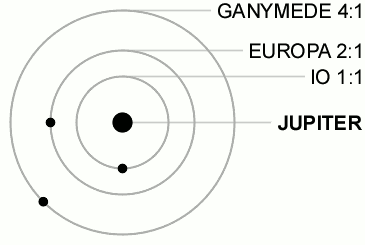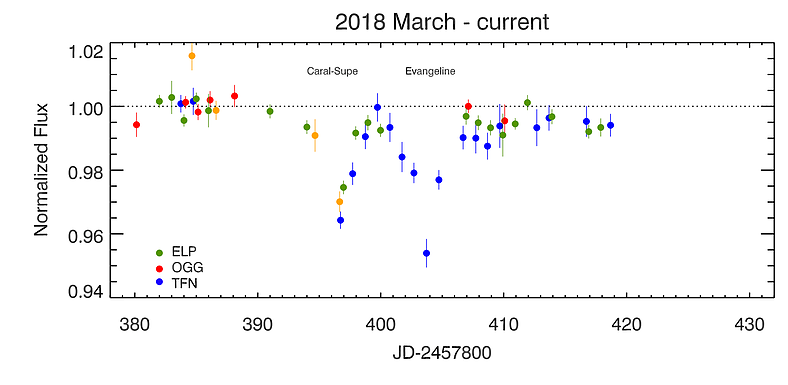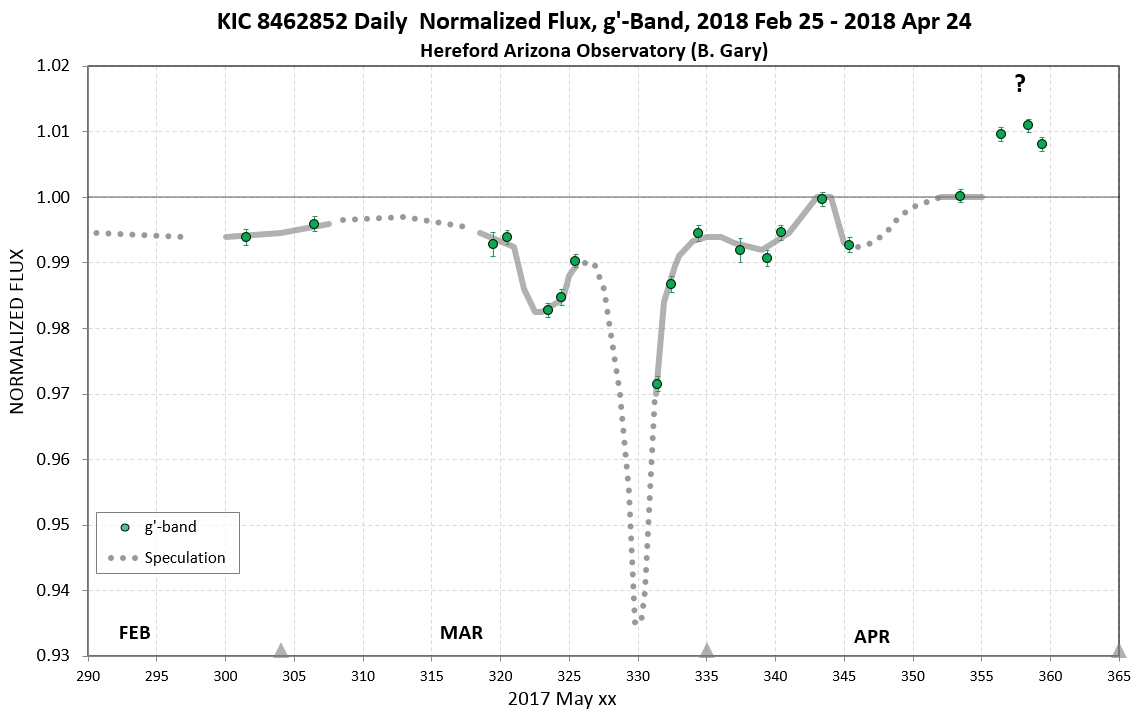
This statement is trivially true. What's controversial is (1) the idea that KIC 8462852 has transits that occupy a stable and structured orbital configuration, and (2) that someone would dare talk about periodicity when there are no widely-accepted transit repeats. That's why the 24.22-day pattern is not generally treated as a thing that exists for analysis purposes, and why any apparent confirmations of the 157.44-day base period seem to be viewed as chance findings.
I think it's useful, nonetheless, to try to figure things out and make testable predictions before there are 3 indisputable occurrences of every transit. Plus I think a theoretical model will be required regardless.
I wrote a script that calculates the error of transit intervals, as seen by an observer at an arbitrary vantage point.
The 157.44-day base period and ~138° vantage point are primarily derived from assuming that the D1540 group of dips is a transit in orbit 10 (× 157.44 days) – per Sacco et al. (2017) – and D792 is a transit in orbit 12. We can test our function with these base assumptions.
> errorAtObserverAngle(D1540G, D792, op(10), op(12), 138)That's 0.82 days of error, meaning that an observer in a different part of the galactic plane, at ~138° ahead of us, would see D1540G and D792 pass by at an interval that is nearly a multiple of 157.44, with about a day of misalignment.
[1] 0.8186
The expected error is 1/4 of 157.44, or 39.4 days. We can confirm this by running tests with random dips and periods.
> runRandomTests()We can also check the function with dips that aren't part of fundamental model assumptions. For example, D140 in orbit 15 and D260 in orbit 13 fit expectations well, as do – to a lesser extent – D359 in orbit 14 and D1495 in orbit 16.
[1] "Mean absolute error: 39.763773697425"
> errorAtObserverAngle(D140, D260, op(15), op(13), 138)
[1] 0.34801
> errorAtObserverAngle(D359, D1495, op(14), op(16), 138)Evangeline
[1] -1.9931
Around March 26, 2018, a KIC 8462852 dip was picked up by multiple observers, and it was the deepest yet observed from the ground. This is how Dr. Boyajian's team depicted it using LCO network data:

This is how Bruce Gary, who had been unable to observe some days due to bad weather, depicted it:

There's an interesting brightening phenomenon Bruce Gary has been documenting in the last several days, but that's a topic for a different time.
I checked which orbit between 3 and 30 would best fit Evangeline under the model previously discussed. It's orbit 11:
> errorAtObserverAngle(D792, EVANGELINE, op(12), op(11), 138)The fit is not as good as one would hope. Under the assumptions of the model, Evangeline showed up a couple days too early. Perhaps our base period is slightly over-estimated (and there are apparent transit repeats which also suggest that) or the alignment angle is slightly off.
[1] -1.1119
> errorAtObserverAngle(D1540G, EVANGELINE, op(10), op(11), 138)
[1] -1.9305
Note that in orbit 11 Evangeline would've missed the Kepler mission. Regarding Caral-Supe, I'm inclined to treat it as a companion of Evangeline for the time being.
To recap...
I'm making the following claims about what I consider to be the 3 primary transits of KIC 8462852:
- The D1540 group is in orbit 10 (× 157.44 days).
Its centroid should repeat in early November 2021, but a repeat of Elsie should be seen in early September. - Evangeline is in orbit 11.
It should repeat around December 22, 2022, which is unfortunately very close to the winter gap. Caral-Supe should repeat about 7 days earlier. - D792 is in orbit 12.
It should be seen again in early July 2021. LCO should be able to pick it up, as should Bruce Gary with near-daily cadence. AAVSO and ASAS-SN can miss it.
Sacco et al. (2017). A 1574-day periodicity of transits orbiting KIC 8462852. arXiv:1710.01081



Comments